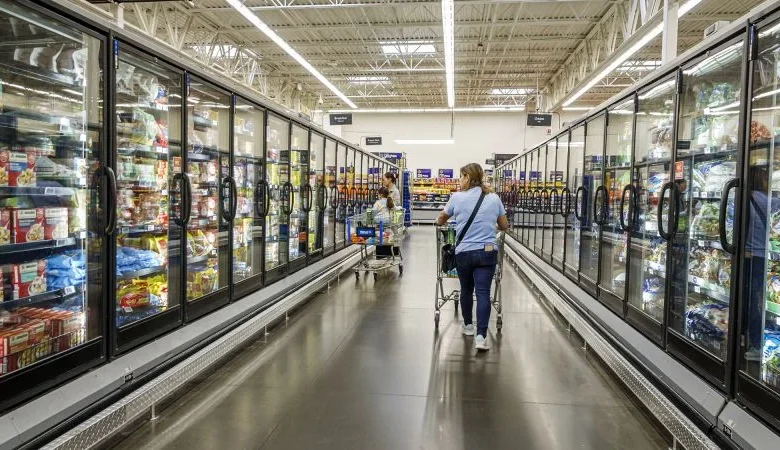Wait, I thought the economy was terrible. What happened?

Entering this week, the perception of America’s economy was overwhelmingly negative.
But after what, at least on the surface, appeared to be a stronger-than-expected jobs report and killer earnings from Nvidia and Walmart – all within the span of about 18 hours – is it possible the economy is better than anyone thought?
It’s complicated. Let’s break it down.
America’s labor market started to stall out in the early summer. Between May and August, job gains averaged 31,000 per month, or about one-fifth the monthly rate seen last year. What happened in September – the report we just got after a seven-week delay – is a bit convoluted.
The preliminary job gains of 119,000 were more than double the 50,000 net increase economists were expecting. However, unemployment moved higher and the prior months’ employment picture turned murkier: The original payroll numbers for July (79,000) and August (22,000) were revised down to a gain of 72,000 and a loss of 4,000, respectively.
All told, the September job growth is a welcome sign that the labor market wasn’t collapsing heading into the shutdown, but the underlying trends haven’t changed much: It’s still a low-hire, low-fire slog with job growth limited to a handful of industries, leaving few opportunities for those who want jobs.
“I don’t know that anybody should be cheering about what we saw in the September jobs report,” Heather Long, chief economist at Navy Federal Credit Union, told CNN in an interview. “I think it’s a relief that it wasn’t worse and that it was (119,000) jobs added; but also remember, almost every number lately has been revised down.”
Mark Zandi, chief economist at Moody’s Analytics, said he remains concerned about the health of the job market – just as concerned as he was prior to Thursday’s report.
“The economy is struggling to create jobs. The unemployment rate is low but it’s now showing some stress,” Zandi said, adding that the closer the rate gets to 5%, the greater the risk of a “reinforcing negative cycle” that can cause a recession.
Affordability remains in crisis
President Donald Trump and his administration have been under siege after the government shutdown, benefits cuts and Democratic election sweep earlier this month exposed what many Americans have been experiencing for years: the cost of living is too high, and consumers are increasingly fed up.
A poll published by Fox News this week showed 76% of Americans have a negative view of this economy, up from 67% in July. Only 15% of respondents said Trump’s policies are helping their financial situation, and 46% said they are hurting – a gap similar to polling at the end of former President Joe Biden’s term, right before voters booted Democrats from the White House.
People are making real changes to their spending habits: Home Depot and Target posted worse-than-expected earnings earlier this week and slashed their forecasts, saying that consumers are making fewer visits and spending less when they shop.
Chipotle, Coca-Cola, Crocs and a host of other consumer brands have made similar comments: American households that bring in less than $100,000 are struggling with already high prices and still-stubborn inflation, and they are pulling back on spending. But people who earn more are more insulated, benefiting from a surging stock market and rising home values.
That so-called K-shaped economy explains some of the nuance in the overall state of the US economy – and why Walmart blew past Wall Street’s already-robust forecasts. Walmart said its fastest-growing segment of customers was made up of people earning more than $100,000 – those who were willing to spend money but were searching for value.
“People’s financial situations are getting squeezed,” Long said. “It’s harder to find work. And for people who have jobs, their income is not rising much faster than inflation. It’s this treading water feeling for the middle class right now, and that’s the part I don’t see changing.”
The stock market is decidedly not always representative of the broader economy, but its strength or weakness can influence how people perceive it. When fears of an AI bubble dragged down the stock market over the past several weeks, that weakness may have contributed to increasingly negative sentiment about the economy.
It started late last month when Palantir, a company that uses AI for government contract work, reported a weaker-than-expected forecast. AI stocks, which have propped up the broader market for several years, started to sink.
But that ended – at least for now – after Nvidia’s earnings late Wednesday proved that demand for its industry-leading AI chips hadn’t evaporated. In fact, demand has continued to surge. The company’s earnings beat Wall Street’s expectations, sending the tech-heavy Nasdaq and the broader market roaring back to life Thursday.
Wall Street basically has no idea. After the Dow gained 700 points earlier Thursday, it gave up all those gains and fell more than 200 points by midday. Even economists are confused.
“This morning’s employment report is adding more confusion than clarity to an exceedingly foggy backdrop,” said Mike Reid, RBC’s senior US economist.
That could complicate matters for the Federal Reserve. It may look at Thursday’s jobs data and earnings with a glass-half-full view and determine that the economy doesn’t need an interest-rate cut in December. That appeared to be the direction the Fed was heading anyway, after October policy meeting minutes released on Wednesday showed deep skepticism about a December rate cut. But that could in turn could keep consumer loans like mortgages and auto loans high, too.
Alternatively, the Fed may look at the rising unemployment rate, overall hiring slowdown in the summer and weakness across multiple sectors and determine the economy needs some more juice. But that could exacerbate some of America’s inflation concerns.
What is the k-shaped economy?
What is the k-shaped economy?
1:15
Similarly, your personal financial situation influences how you view this economy. If you have a high-paying job in a field that’s relatively insulated from layoffs, you may be feeling great and spending a lot now. If you don’t… you probably aren’t.
Increasingly, people in the latter category are really struggling – going into serious debt and struggling to find work. That’s why the Trump administration is increasingly floating new policies like lowering housing costs, sending stimulus checks to American households and cutting tariffs. They’re controversial, and economists are split if they’d work, but they’re responsive to a growing wave of negativity.
It’s not clear how this all will shake out. The economy has had false alarms over the past several years. But what’s clear is many Americans hate this economy, and they’ll continue to hate it until they feel like they can afford things again.




